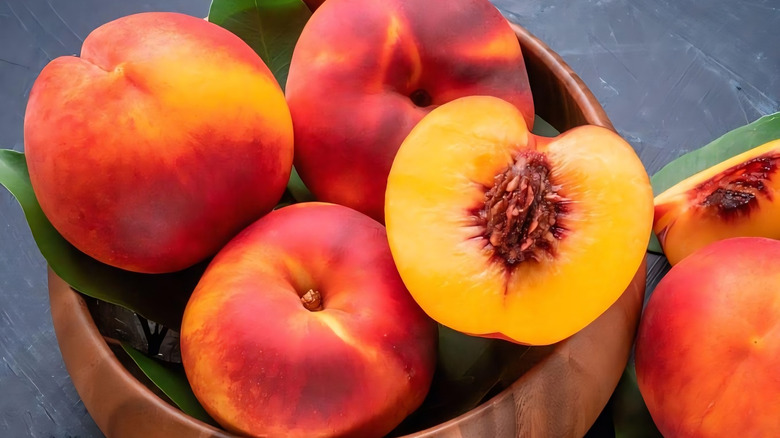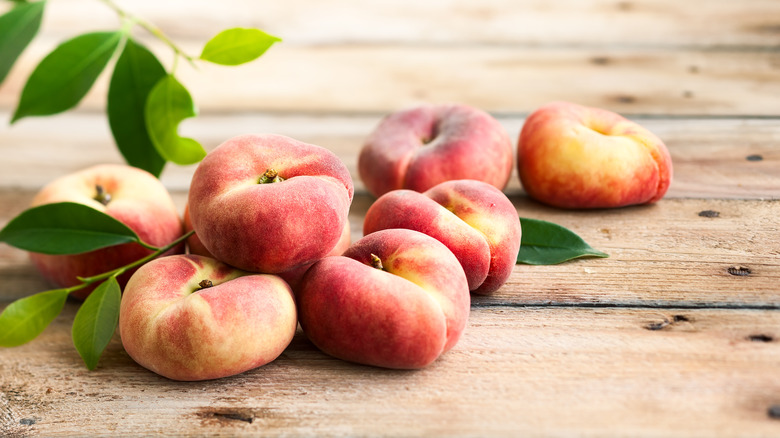Here's How To Pit A Peach Without Making A Mess
We may receive a commission on purchases made from links.
Ever tried to remove the pit from a peach with your hands, only to bruise the fruit and create a mushy mess? With a simple tool that also serves as a can opener when you don't have one handy, you can pop out that pit with ease and enjoy this juicy stone fruit. All you need are needle-nose pliers. Don't just grab the pair from your toolbox, though; if you don't already have some for the kitchen, perhaps for removing fish bones, Chef's Trade's stainless steel pliers will do the trick. Simply slice the peach along its center with a sharp knife, gently twist the top and bottom halves in opposite directions to separate them, and armed with a clean pair of needle-nose pliers, firmly grip the exposed pit and carefully pull it out. Gently twisting the peach when removing the pit can further help release it from the fruit's flesh.
Using this handy tool, you will minimize bruising, prevent any juicy mishaps, and keep the fruit intact. While there are popular specialized gadgets like the Chef'n Peachster, some shoppers report that this tool can crush the entire fruit and is not worth the money. Whether you're making a summer fruit salad with a sweet, tangy dressing or a simple yet luxurious peach sauce, this needle-nose plier technique makes preparing your peaches much easier and certainly cleaner.
Pitting different peach varieties
Lovers of fresh peaches tend to have preferences for different peach varieties. White peaches are on the sweeter side, while yellow peaches have a subtle tartness to them, and there are many more characteristics that distinguish each type of peach. But is there a difference when it comes to how to remove their pits? The answer is yes, but the difference mostly lies in the handling of the peach rather than the utility of the needle-nose pliers.
Fairly large in size, freestone peaches are the easiest to pit since their flesh naturally separates from their pits. Sometimes, when cut in half, the pit may come out easily without further reinforcements. At other times, the fruity flesh may cling to the pit, so the needle-nose pliers will need to do the trick. Clingstone peaches, as their name suggests, have flesh that will stick more tightly to the pit and, as a result, will require more careful handling. Semi-cling varieties are hybrids between these two types. During peak ripeness, they behave more like freestone peaches, but are more similar to clingstones in their unripe phase. For donut (saturn) peaches, known for their uniquely flat shape, the smaller, flatter pit usually separates more easily than conventional peach varieties. At the end of the day, regardless of variety, make sure you choose perfectly ripe peaches to make the pitting process easier and cleaner.

